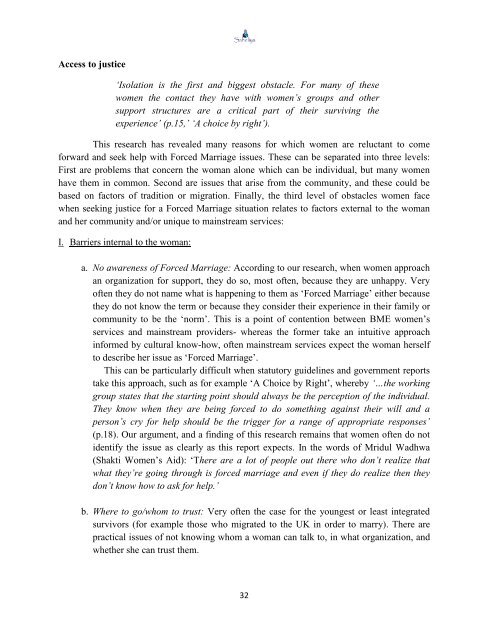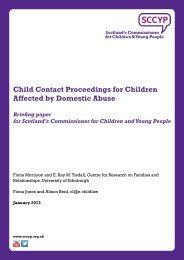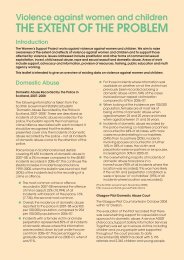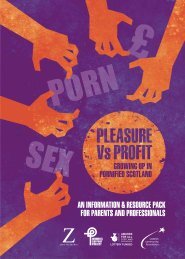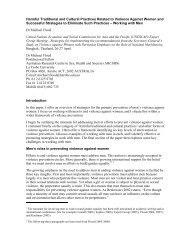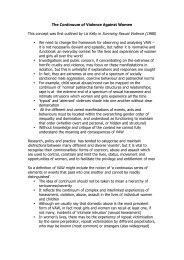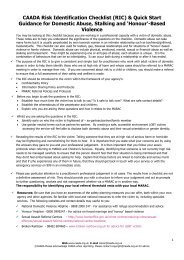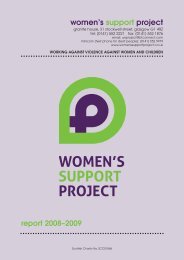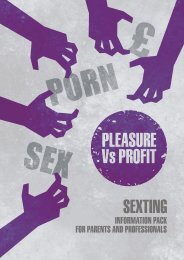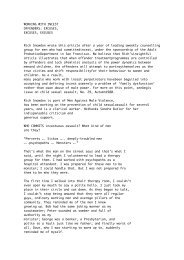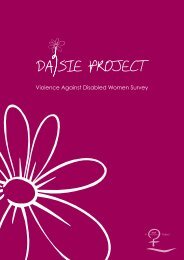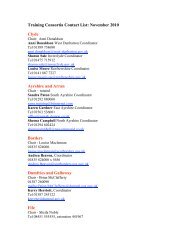WOMEN AND FORCED MARRIAGE IN SCOTLAND
women and forced marriage in scotland - Women's Support Project
women and forced marriage in scotland - Women's Support Project
- No tags were found...
You also want an ePaper? Increase the reach of your titles
YUMPU automatically turns print PDFs into web optimized ePapers that Google loves.
Access to justice<br />
‘Isolation is the first and biggest obstacle. For many of these<br />
women the contact they have with women’s groups and other<br />
support structures are a critical part of their surviving the<br />
experience’ (p.15,’ ‘A choice by right’).<br />
This research has revealed many reasons for which women are reluctant to come<br />
forward and seek help with Forced Marriage issues. These can be separated into three levels:<br />
First are problems that concern the woman alone which can be individual, but many women<br />
have them in common. Second are issues that arise from the community, and these could be<br />
based on factors of tradition or migration. Finally, the third level of obstacles women face<br />
when seeking justice for a Forced Marriage situation relates to factors external to the woman<br />
and her community and/or unique to mainstream services:<br />
I. Barriers internal to the woman:<br />
a. No awareness of Forced Marriage: According to our research, when women approach<br />
an organization for support, they do so, most often, because they are unhappy. Very<br />
often they do not name what is happening to them as ‘Forced Marriage’ either because<br />
they do not know the term or because they consider their experience in their family or<br />
community to be the ‘norm’. This is a point of contention between BME women’s<br />
services and mainstream providers- whereas the former take an intuitive approach<br />
informed by cultural know-how, often mainstream services expect the woman herself<br />
to describe her issue as ‘Forced Marriage’.<br />
This can be particularly difficult when statutory guidelines and government reports<br />
take this approach, such as for example ‘A Choice by Right’, whereby ‘…the working<br />
group states that the starting point should always be the perception of the individual.<br />
They know when they are being forced to do something against their will and a<br />
person’s cry for help should be the trigger for a range of appropriate responses’<br />
(p.18). Our argument, and a finding of this research remains that women often do not<br />
identify the issue as clearly as this report expects. In the words of Mridul Wadhwa<br />
(Shakti Women’s Aid): ‘There are a lot of people out there who don’t realize that<br />
what they’re going through is forced marriage and even if they do realize then they<br />
don’t know how to ask for help.’<br />
b. Where to go/whom to trust: Very often the case for the youngest or least integrated<br />
survivors (for example those who migrated to the UK in order to marry). There are<br />
practical issues of not knowing whom a woman can talk to, in what organization, and<br />
whether she can trust them.<br />
32


